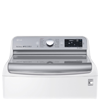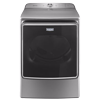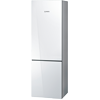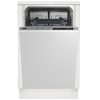Finding modern appliances with energy-saving technology can be a bear. Lucky for us, Energy Star, a company that puts its name on the most energy-efficient technology, has released a 2016 list of the best energy-efficient appliances on the market! Take a look at some of these appliances and learn how modern technology can not only save energy, but also save you money.
The Efficient Washer
 This LG appliance cuts wash time in half with its TurboWash® Technology. This uses a lot less water, and less electricity, making washing clothes the cheapest it has ever been. It also has the LG Steam feature, which gently cleans and disinfects clothing by using less water than a normal load of laundry requires.
This LG appliance cuts wash time in half with its TurboWash® Technology. This uses a lot less water, and less electricity, making washing clothes the cheapest it has ever been. It also has the LG Steam feature, which gently cleans and disinfects clothing by using less water than a normal load of laundry requires.
The Efficient Dryer
 Any dryer with a sensor rather than a timer is more energy-efficient. The large capacity of this dryer allows for more clothes to be dried at a time, decreasing the amount of loads to be done. A dryer can eat up a large portion of your electricity bill, so the less you need to turn it on, the better!
Any dryer with a sensor rather than a timer is more energy-efficient. The large capacity of this dryer allows for more clothes to be dried at a time, decreasing the amount of loads to be done. A dryer can eat up a large portion of your electricity bill, so the less you need to turn it on, the better!
The Efficient Refrigerator
 This sleek refrigerator does just as much for the design of your kitchen as it does for your home’s energy savings. The LED lighting in the appliance shines bright and is very efficient. The electronic temperature controls give precise temperature reads so that you can be sure your refrigerator is working at the degree of your choice – and not overworking!
This sleek refrigerator does just as much for the design of your kitchen as it does for your home’s energy savings. The LED lighting in the appliance shines bright and is very efficient. The electronic temperature controls give precise temperature reads so that you can be sure your refrigerator is working at the degree of your choice – and not overworking!
The Efficient Dishwasher
 At an operating cost of only $26 per year, this dishwasher is definitely a winner when it comes to your monthly electric bill. It only uses about 220 kWh per year in comparison to the U.S. federal standard of 307 kWh per year. It also only uses about three gallons of water per wash, which is two gallons less than the average.
At an operating cost of only $26 per year, this dishwasher is definitely a winner when it comes to your monthly electric bill. It only uses about 220 kWh per year in comparison to the U.S. federal standard of 307 kWh per year. It also only uses about three gallons of water per wash, which is two gallons less than the average.


 The U.S. Department of Energy and the U.S. Environmental Protection Agency set strict guidelines for products to prevent greenhouse gas emissions.
The U.S. Department of Energy and the U.S. Environmental Protection Agency set strict guidelines for products to prevent greenhouse gas emissions. 

 DSIRE – a nationally-funded initiative at the N.C. Clean Energy Technology Center at N.C. State University – makes it easy to see what incentives are available in your particular state with an interactive map of the U.S. You click on your state, choose a program type and a technology, then a list of incentives appears. It also lists the latest policies that promote energy efficiency and renewable energy. Updated in real-time through database content, it’s the most comprehensive resource of this type of information in the nation.
DSIRE – a nationally-funded initiative at the N.C. Clean Energy Technology Center at N.C. State University – makes it easy to see what incentives are available in your particular state with an interactive map of the U.S. You click on your state, choose a program type and a technology, then a list of incentives appears. It also lists the latest policies that promote energy efficiency and renewable energy. Updated in real-time through database content, it’s the most comprehensive resource of this type of information in the nation.